Starting on the common of his childhood in North Wales, Eben Myrddin Muse walks through Welsh landscapes public and private — and ponders connection, access, enclosure, and community.
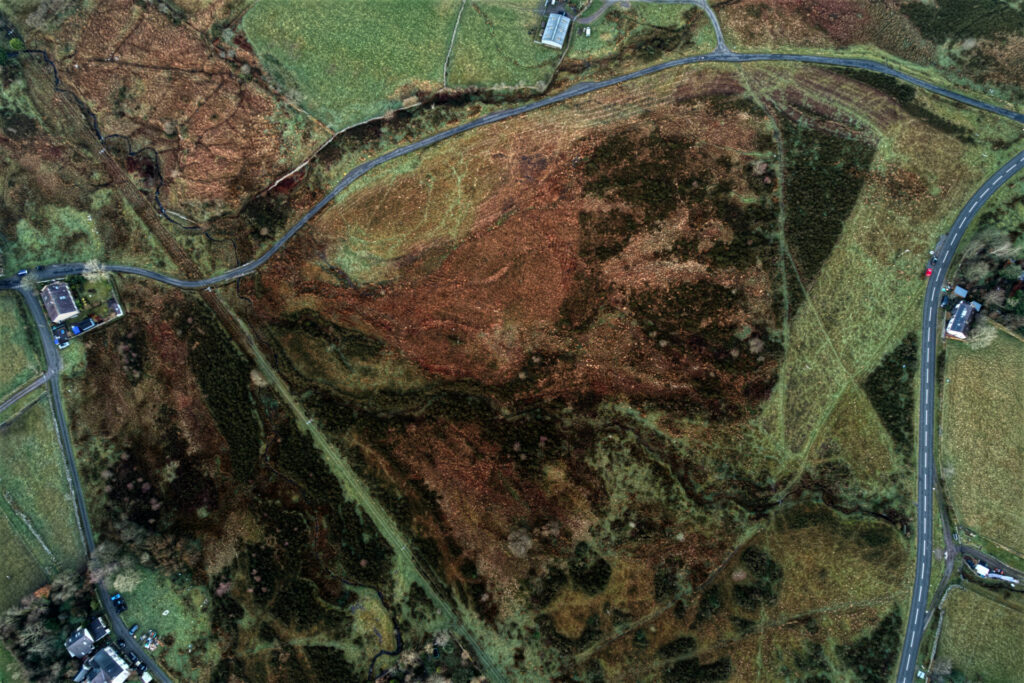
I: Comin
‘To where do you trace your roots?’
Me, I grew up in the hills, quarries, and upland commons of western Eryri; a place called Bryn and a valley called Dyffryn Nantlle. I’m not there anymore though; I’m part of a demographic shift centuries in the making: the urbanisation of Wales, or more accurately, the urbanisation of Welsh people. We are, all of us, moving away from the countryside as one great host. And as for the places we’ve left behind – they are withering. The closest village to my home feels like a husk; the school, the post office, the bakery, two corner shops, the gift shop, all gone as my generation watched from a growing distance.
I’m one of the lucky ones – not even a generation removed from the rural. The Uwch Gwyrfai common was our playground growing up; nestled under Moel Tryfan’s rounded bonce and slouching slag heaps. It’s one of Wales’ holdouts of unimproved ‘wastes’, grazed by local farmers together in common. But if you look at a map of the present-day common you can see how it’s been snipped at and nibbled away: for new farmsteads or smallholdings, a set of terraced houses here or a new quarry there. You can see their cut-out shapes. But it remains in existence, tattered and defiant. Tir comin, common land; grazed, yes, but borderline worthless in agricultural terms, torched regularly to hold back the tide of yellow-blooming gorse, eithin, which is resurgent each spring. It never felt wild to me, really. Free, but never wild – there was always livestock everywhere. You couldn’t walk five paces without getting shit on your trainers at any time of year. And the grass was always chomped down to the dirt.
We’d heard from someone that old Queen Liz owned the comin but had no interest in it, so we decided it was ours to do with as we wished. Suited us fine! We’d dam the river, dig hobbit holes under the turf, fashion spearheads out of slates, roll fly tipped tractor tyres down the toman lechi (slag heaps), and marvel at how the floods which began in the autumn reset the landscape; forging new bogs and waterways. I don’t remember paying attention to ‘nature’ at all. The landscape was just the medium of our lives. There weren’t many hedges, I don’t remember seeing a bird of prey, a shrew, a fox. ‘Biodiverse’ or ‘wild’ aren’t words I’d have ever applied to that place, but we loved it.
One year a hippy who had moved in up the road started planting trees in the gorse. We resented it, because that rough, spiky, wet place was our home and the thought of it changing seemed unthinkable. Especially at the whim of someone who’d just moved in, and whom we assumed would probably soon be off again. Some transient stranger. There were never more than a few scattered trees on the common when I lived there – a small birch grove, whose branches our neighbour used to make walking sticks. A lonely willow wallowing in the middle of a drained lake at Dafarn Dywarch, seasonally surrounded by cotton grass (plu’r gweunydd, or ‘moor feathers’ in Welsh). Ieuan Rwdan, from up the road, once told me all the trees had been gone from the common since the cold harsh winters and energy crisis of the 1970s. He’d been up there with a hatchet himself as a child, he said. They’d needed the fuel. Ieuan and my other neighbours have used the common outside his house for a garage, a dump, a garden, a firing range, a car park, and — back when there were more of us around — to host bonfire nights and firework shows. I’d stroll past the bonfire spot with growing excitement, watching the heap of pallets pile high as November approached.
Then one year I remember a newcomer of a different kind to the common: dozens of unusual, hollow-stemmed shoots and a striking purple flower. They had appeared all along the marshy banks of the stream that ran through the common in bright patches. Much to our delight, they soon sprouted spring-powered seed pods which shot the seeds out and sprang like a mousetrap if touched. What fun! We’d flick them at each other, fascinated by this strange new natural wonder.
Himalayan Balsam had come to stay, and it would not be leaving anytime soon. I realise now that it’s quite bleak that the arrival of one of Britain’s worst invasive species is one of my abiding memories of ‘nature’ growing up. But what can you do?
II: John, Jon, Jerry, and Jack’s Oak
‘We’re standing on an old right of way’; Jon informs me.
This would have been the main route for the villagers of Kentchurch to reach the common of Garway hill where they could forage, graze their animals, and exercise their other commonly rights. Garway is another of Britain’s stubborn commons, rough land covered in ferns, grazed by ponies, exposed to the wind and a haven for fungi. Regrettably, that right of way was extinguished in the 1940s and therefore we are now trespassing in the domain of the aristocratic Scudamore family who have owned it and the deer park around it for the best part of a millennium, as well as the crenelated mansion of Kentchurch Court below us. My other friend (John with an h) seems moved at the sight of it: “It just begs to be walked through doesn’t it?”. We all know what he means.
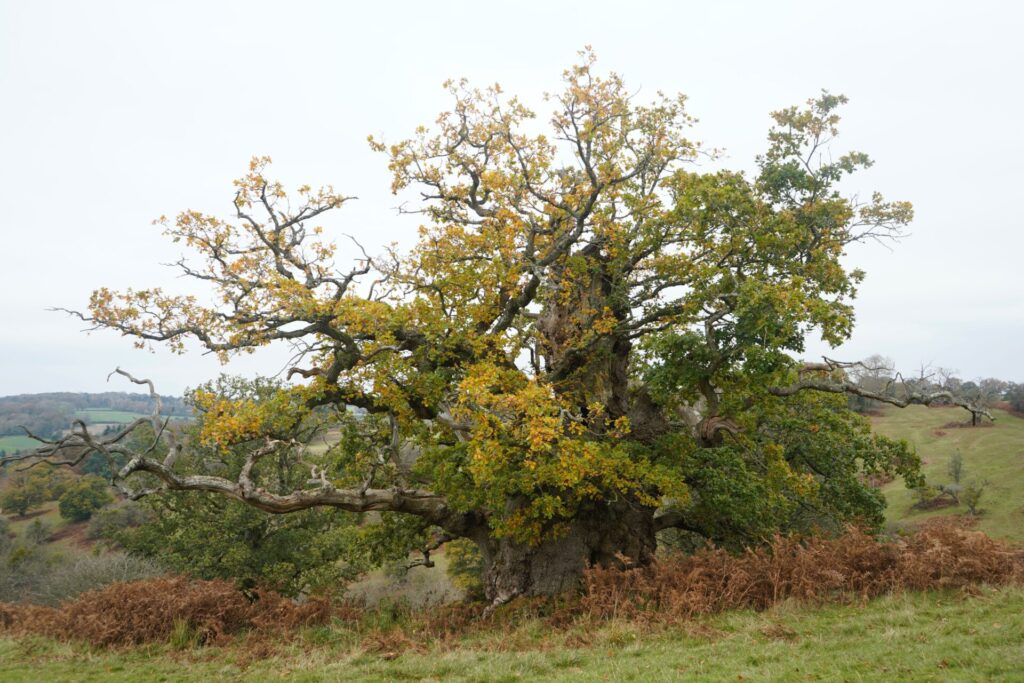 Photo: Jerry Cross. All other images: Eben Myrddin Muse
Photo: Jerry Cross. All other images: Eben Myrddin Muse
We’re there to see one of the country’s most venerable trees – a broad-boughed colossus known as Jack of Kent’s Oak. The story goes that Jack tricked the Devil in various ways, leaving all manner of geological phenomena in the wake of his antics. The cleft in the Skirrid from his heel as he leapt to the Sugar Loaf, the standing stones at Trellech the remains of a stone hurling competition, and the oak supposedly his favoured seat. It’s unlike any tree I’ve ever seen – all death and regeneration, char and verdant growth, decay and new life. It would take ten tall hippies to tree-hug its width. You can feel its history – one thousand years old, same age as the dynasty that owns it. I walk with a spring in my step the rest of the way, the rest of the day; what ‘a tree’ can be to me now is different to what it was this morning. We catch a couple of mammoth yews, and a chestnut tree with strange spiral bark as a bonus.
Back on the common, close to the car, third companion Jerry asks how I feel about the sight of the landscape from the top of the hill, and I feel a rush of anger. From the hill’s vantage I can see the contrast clearly: outside the enchanted walls of the estate I see a country despoiled, with all life pushed to the margins, squeezed for every drop to maximum productivity and capital extraction. Within the tall deer fences I see a forbidden Eden. We are cast out into the cold. It’s unfair. I never tasted any forbidden fruit!
It is suggested by John or Jon, tongue-in-cheek, that it’s only because of their enclosure and their jealous guardianship of this park that Jack’s Oak survives, and I get to see it. I should thank them.
Might this hold a grain of truth? Can the public really not be trusted? I think back to Ieuan Rwdan on the Uwch Gwyrfai common, with his hatchet perhaps falling on an oak, just like Jack’s, out of simple necessity. It would certainly keep any hearth warm for an awfully long time. I think of the Senator, a 3,500-year-old tree killed by a garbage fire in 2012 in Florida. Kiidk’yaas, the mutant golden spruce felled by an activist in 1997 to protest, of all things, commercial logging. Prometheus – the bristlecone pine which was, at the time of its felling by a misguided graduate student, possibly the oldest organism on earth at nearly 5,000 years. I think of those desperately sad photos of the sycamore gap, sawn down in anger, lying prone against Hadrian’s wall.
But wherefore did our forests go? We are way down the rankings globally for tree cover. If you look at the pollen records, they show our woodlands have been whittled away and exhausted steadily since the Norman conquest. Ancient woodland in the UK is only defined as being 400 odd years old because we’ve lost so much of it. So where did it go? Old growth burned to flush prey, then for new pastures. Lopped down as timber to sail slaves from Africa and bring wealth and empire to Britain. Razed and grazed by endless flocks of sheep, and harvested by the grove for support props in the murky depths of the South Wales coalfields. Whole forests felled to make boards for the trenches of the Somme.
It wasn’t the aristocrats, the slavers, and empire builders inside the walled garden who protected our ancient trees – it was their lot who fucked them! Parcelled the woodlands and commons that sustained us into commodities to be seized and traded and squeezed, as hoarded land to be sat on as an asset sure to guarantee a prosperous portfolio at our expense.
Thank them. Would you thank a landlord who evicted you from your home for not grubbing up the apple trees in your garden? No! They deprived us of a thousand Jack of Kent Oaks, root and branch. And the ones they kept just for themselves, they still keep for themselves.
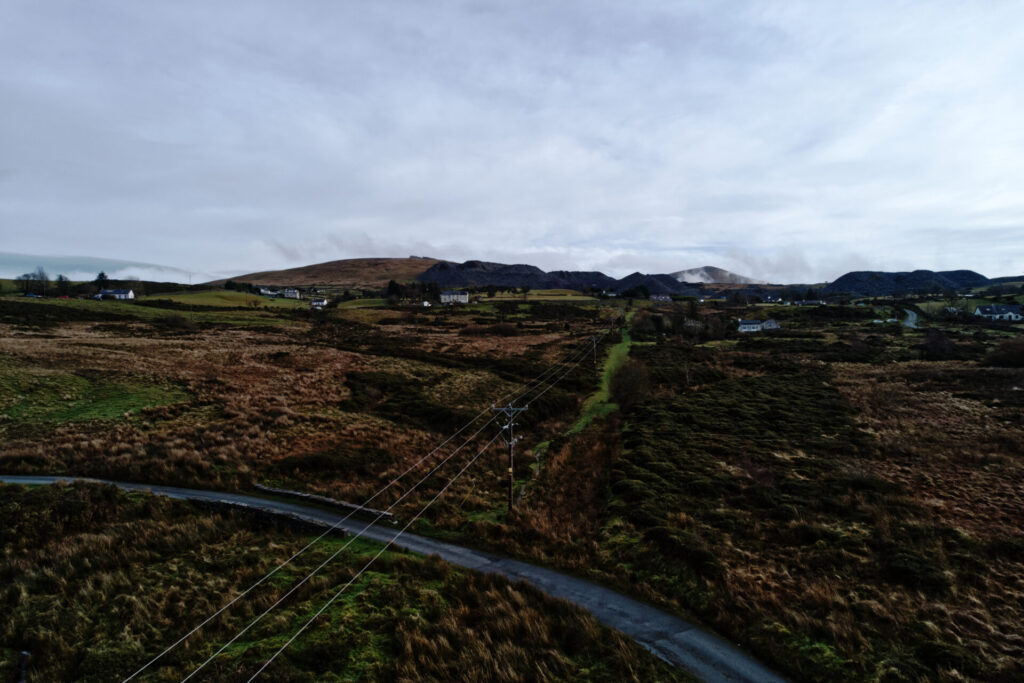
III: Pengam
I’ve got used to city life now, a decade removed from Eryri. A transplant to Splott, part of East of Cardiff known for its historic steelworks, which somehow still hum in the background, now dealing in scrap. There is community here, and it seems like it’s growing, not fading. I’ll often see friends or recognise neighbours walking down the street. Unlike back home, there’s still a post office, a bakery, a couple of schools, corner shops, pharmacies and (oh so many) vape shops. There’s even a pub which does a pretty good karaoke night on a Friday.
Access to green spaces isn’t great here, and access to wild places poorer still – just 0.3% of the Cardiff South and Penarth constituency is designated ‘open access land’ where people can go where they want. But it’s not because appropriate spaces don’t exist. They’re all around us, and I’m off to check one of them out today for the first time.
The path leads to Pengam Moor – well, it’s a road, technically. An abandoned one, leading away from a curiously-redundant roundabout. First, I must surmount some official-looking rubble mounds.. Second, a less official-looking mass of fly-tipped rubbish which compresses and bounces as I hop through it, using the more solid parts as squelching stepping stones. A mysterious grey gelatinous ooze squeezes out with each step. As I enter the moor proper, the way is made eerier by the looming streetlights, lit no more, regularly sticking their heads out of mass of trees and brambles like the head of a long-dead long-necked dinosaur. It feels like a ghost town without houses.
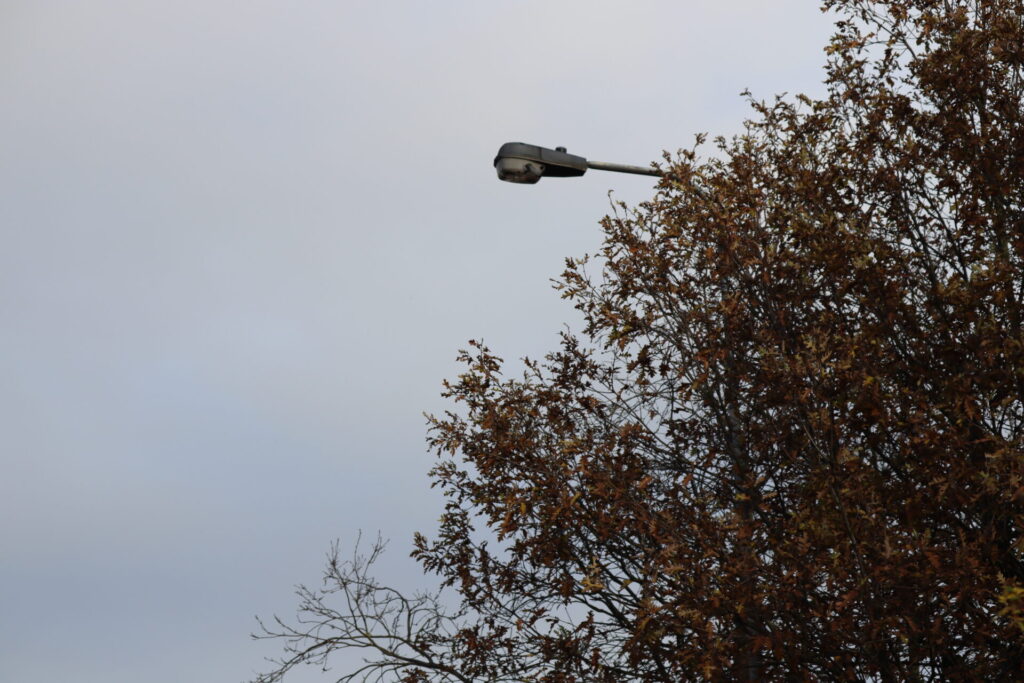
I catch a few glimpses of the moor itself through gaps in the thicket – there are speckled ponies grazing there among the willow trees. I hit a wide stretch of straight tarmac and realise that I’m standing on one of the runways which used to form Cardiff Municipal Airport (or before that, the cooler-sounding Splott Aerodrome). The standing water pooling around the ponies’ feet shows why the place was abandoned – this a wetland banking the Rhymni river and the sea on two sides, a Welsh high-risk sea-flooding zone and not far off the river one either. You can see why they’re building a massive rubble seawall between us and the Severn.
I hop over a fence made of old pallets and find myself in a sort of urban rewilding scheme. I’m reminded of the big estates in the South of England selling gourmet meat and hosting weddings and wildlife safaris. ‘Natural processes’ have resumed (posh voice). I follow the horse-trodden path through the scrub, with the mud deepening and the passage narrowing. There are wild cherry trees, there’s dog rose and blackthorn. I spot two different varieties of invasive cotoneaster and gnarled butterfly bushes grasping at the sky. There is gorse everywhere – but not the sort I’m used to back home. These are towering flowering giants – you could find shelter from the rain under their boughs. You could harvest this gorse for timber! Oh-spiky-shrubs-from-my-youth, what potential you held, I never knew. A twist in the trail leads to a tunnel through the brambles. Should I enter? I notice with alarm that I’m standing on a stack of white asbestos and decide it’s not the time to get on my hands and knees.

Tracing my steps and scaling a spiked fence, I find myself in a paddock sealed off by some stolen plastic highway barriers. The steelworks have turned on their floodlights in the backdrop; it’s only two in the afternoon but the horses don’t care. I’m a little overcome by the multiplicity of the place – pylons and horseshit, and fly tipping, and wetness, and stubborn growth. The ugly and the pristine, it’s all here. There are teasels, three kinds of willow loving the wet, and rushes clipped short by munching mouths. A former stile to the east, now fenced-off, indicates some past state of accessibility, now long forgotten.
It’s starting to drizzle, and my camera is new and of dubious water resistance, so I pack it away and squirm through the new hole in the fence I’ve just spotted. I wonder why I haven’t made the trip here before – but I’m glad I came, despite the now-lashing rain.
As I emerge through the fence and re-enter society in a Tesco car park, I realise I’m angry again. This land isn’t private land. It’s not an aristocrat’s playground, squirreled away by William the Conqueror for his accomplices. The Welsh Government owns these 59 acres, which sort of means that I, we own it. It’s not a landfill site – it’s a dumping ground for hazardous waste because there are no people allowed in, not the other way around. It’s one of hundreds of sites across the country where it’s been decided by our betters that the masses best be fenced out. But who’s the beneficiary here? What are they afraid of? The razing of the northern meadows in Cardiff shows what happens when a community gets a chance to love their land – they fight to keep it. But we’ve been losing battle after battle.
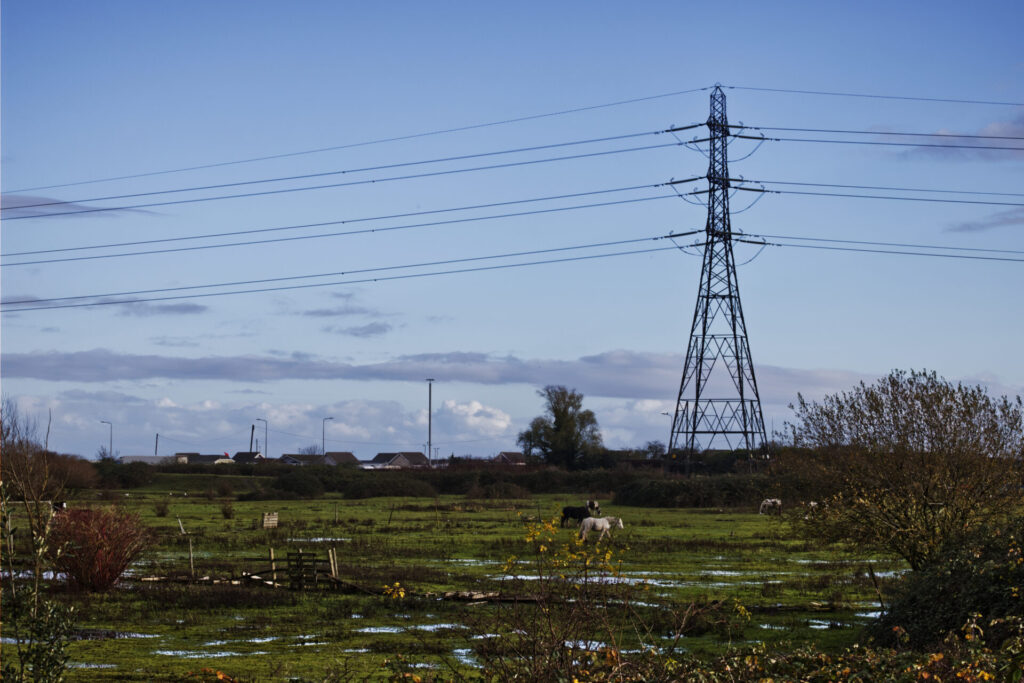
So where does that leave me? I’m one of the multitudes who have been cut off at the stem – grafted onto the city to grind out a living enveloped in asphalt. In some ways it’s no better back in Uwch Gwyrfai though. Every time I return to the comin, petty enclosers have claimed new conquests for their smallholdings, their tiny castles better fortified, more private. New barbed wire fences enclose streams and places where I used to play and dig out clay, and old rights of way are blocked or redirected around properties (always along a worse route). New signs threaten me to steer clear or face the consequences. Threats of violence, threats of litigation, always surveilled. Fuck off, fuck that.
It’s sick. We’re severed from the land that has always sustained us, from our heritage, and from what natural life is left in this country. Each generation more than the last. Paternalistic bureaucrats, rentiers, and profiteering landowners all link arms with the law to make it so and keep it so. And then they have the gall to tell us we can’t be trusted. The Welsh language is circling the drain in rural Wales, and the country people left behind are sadder, poorer, more isolated. It can’t go on.
So I’ll peer over tall fences, at old trees. I’ll stand with those organising to protect their remaining commons. I’ll ignore signs which tell me this isn’t my place to be. And I’ll love, and share the hidden wild spaces still writhing in slivers within the urban.
*
Eben Myrddin Muse is an emerging writer and campaigner from Dyffryn Nantlle. In his work he explores land justice, Welshness, commons, and nature connection. He has written for The Welsh Agenda, Viewpoint and Climber Magazines, as well as being a regular contributor to UKClimbing.com. He works as a policy and campaigns officer for the British Mountaineering Council’s access and conservation team and is an ambassador for the Campaign for National Parks.